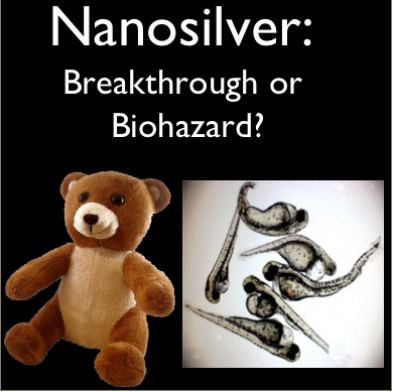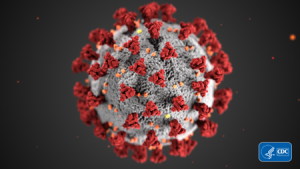If you’ve heard of any product that uses nanotechnology to help fight the novel coronavirus in some way, you might want some help explaining how it works to your visitors. Nanotechnology has helped in many ways when fighting COVID-19 from testing materials in labs to next generation personal protection equipment. But what about nano-materials that could be deployed by your museum? Several museums have adopted nanocoatings on surfaces that are frequently touched with a material that is self-sterilizing. And, NISE Net has some activities that might help explain how this technology works.
Our fellow museum colleagues have worked many hours ensuring visitor safety by constantly cleaning surfaces. This is, of course, necessary, but hopefully with the help of nanotechnology, we can spend more time focusing on education.
Nano-sized titanium dioxide (TiO2) coatings
Here’s an example of nanotechnology that might help: instead of sterilizing a surface every time it is touched, a door handle can be coated with a nanomaterial that neutralizes any pathogens as an ongoing process. How does this work? By using nanosized titanium dioxide (TiO2) which takes advantage of a process called photo-powered catalytic oxidation. Let’s break down that sentence.
A process called photo-powered...
- So it uses photons of light, photo-powered: some use UV while other, newer materials can use a broader spectrum of light.
catalytic…
- A material that helps a reaction along without being consumed itself is called a catalyst.
oxidation.
- So with the energy provided by light and the presence of the catalyst, electrons are released on the surface of our TiO2 material and it interacts with water in the air and surface. The water (H2O) breaks down into OH (hydroxyl radicals) which are very reactive. They latch onto bigger carbon-based materials, like the coating of a virus or cell membrane, and break them down into carbon dioxide (CO2), water, and other molecules from breaking down biological material.
(Note: In this image, the "byproducts" mostly include H2O and CO2, but it should also include other molecules from breaking down biological material. Image Source: Zander Scientific and Hamilton Thorne: https://www.hamiltonthorne.com/index.php/products/air-purification-systems/photocatalytic-oxidation-pco
The material enabling this process, titanium-dioxide (TiO2), is found in many products as a white pigment in its non-nano form. As particles of TiO2 get smaller and smaller, changes in its behavior happen. At around 100 nanometers, it absorbs and scatters UV light so effectively that it is used to protect skin as a sunscreen. Even at that size, left uncoated, TiO2 can behave as an inefficient photo-catalyst. In order to prevent this behavior and make it safe for our skin, the TiO2 particles are coated with ethylene glycol. At around 8 nanometers, it’s a very efficient photo-catalyst and used in self-cleaning and self-sterilizing materials. Since TiO2 requires light to work as a catalyst, exterior door handles that get a lot of sunlight are the obvious place for these materials. And in older versions of this material, UV light was required, but as the science has advanced, a broader spectrum of light can be used to include indoor lighting to facilitate this reaction. (Sources: https://ceramics.org/ceramic-tech-today/power-of-materials-these-door-handles-use-titanium-dioxide-to-stop-the-spread-of-germs, https://fmlink.com/articles/the-next-big-really-small-thing/, and https://www.ncbi.nlm.nih.gov/pmc/articles/PMC4385004/)
So, what NISE Net activities can you use to explain this phenomenon?
Unfortunately, there isn’t a direct translation but used in conjunction, several activities could work. And these activities can be “hands-off” because we want to make sure that during this time we keep social distancing and prevent multiple people from handling possibly contaminated materials.
Our Nanosilver, Surface Area, UV Bracelets, and Sunblock activities paired together could help foster a conversation between you and your visitors about these surfaces. Nanosilver is also antimicrobial and has been used on surfaces to prevent the spread of microbes or keep them sterile. Like TiO2, silver changes its behavior at the nanoscale. So these activities can help start the conversation about surfaces that can be useful in our current situation.
(Please note that nanosilver has been peddled by snake-oil salespeople who claim that if ingested, it’s a cure for the coronavirus: this is not supported by any scientific literature. But there are good conversations to be had since there are always valid questions about material safety in both snakeoil applications and scientifically substantiated uses.)
After talking about antimicrobial surfaces, the next two activities can provide a bit more of a visible phenomena that you could show off. The UV bracelet activity could be used by itself or combined with the sunblock activity. The beads change color in the presence of UV and you could see if your current location gets any UV light. You will probably need a black light for this demonstration but it does show that in the presence of UV light, the beads change color: so the change in color is “photo-powered.” After showing this, you could then lightly coat some UV beads with a TiO2 sunscreen and hold it up to the black light to see if the bead’s color changes. You can talk about TiO2’s interesting properties at different sizes and bring the conversation back to self-sterilizing surfaces and how the TiO2 nanosurfaces work! It’s best to assemble all the information in these activity guides and find the bits that will help you create a narrative: it will take practice connecting self-sterilizing materials to materials that are “light” powered, but we are sure you can make it work.
Coronavirus COVID-19 Resources
https://www.nisenet.org/coronavirus


